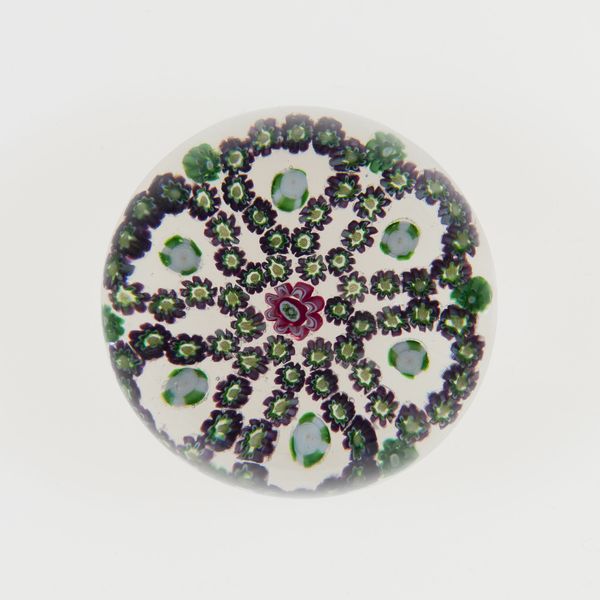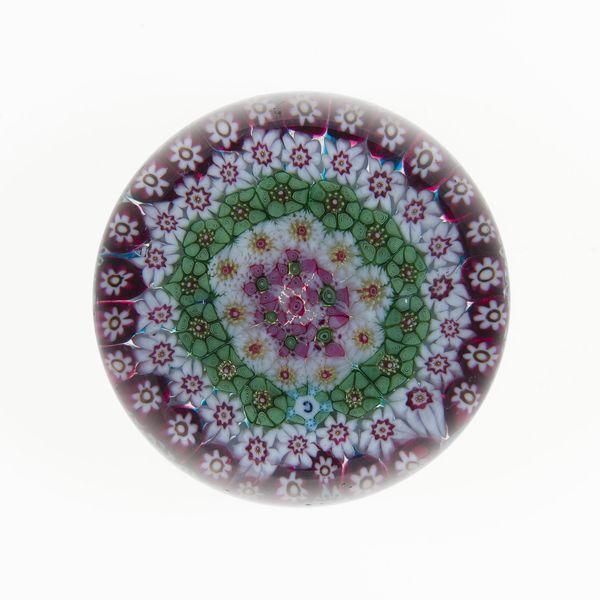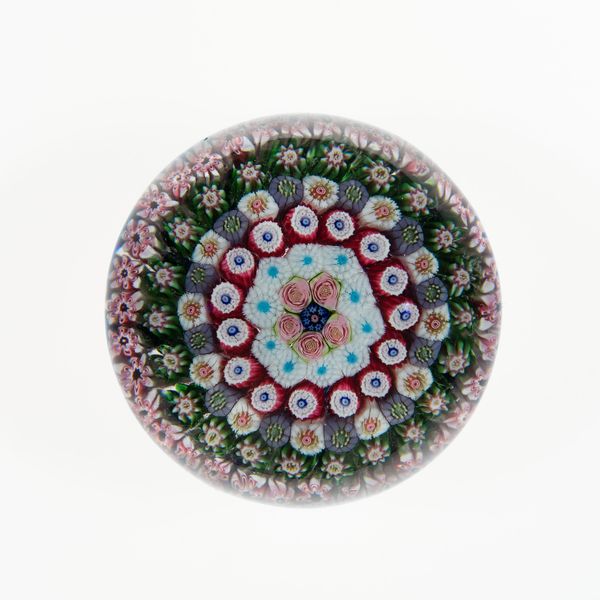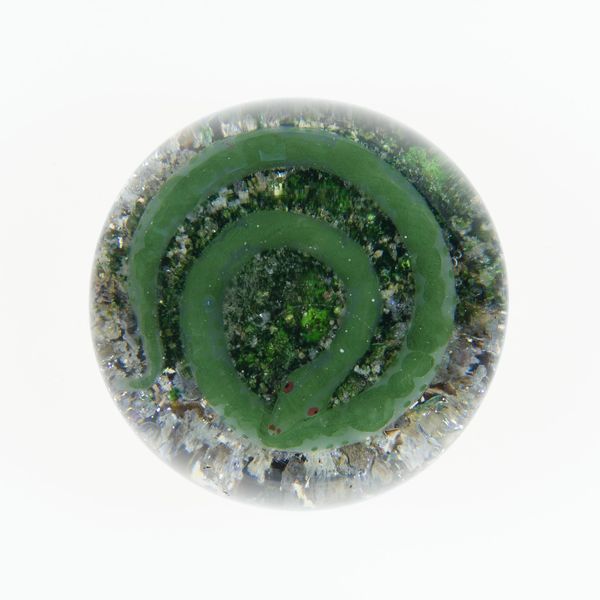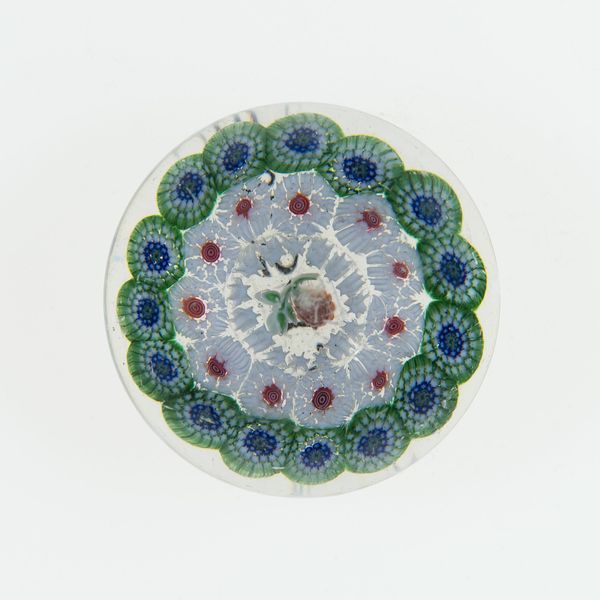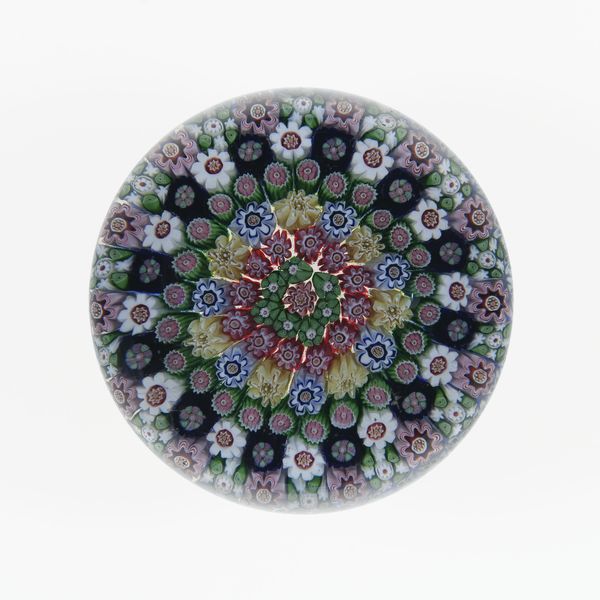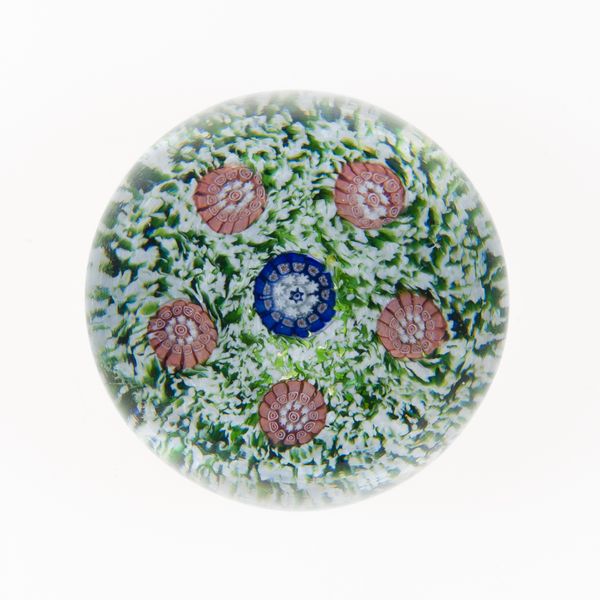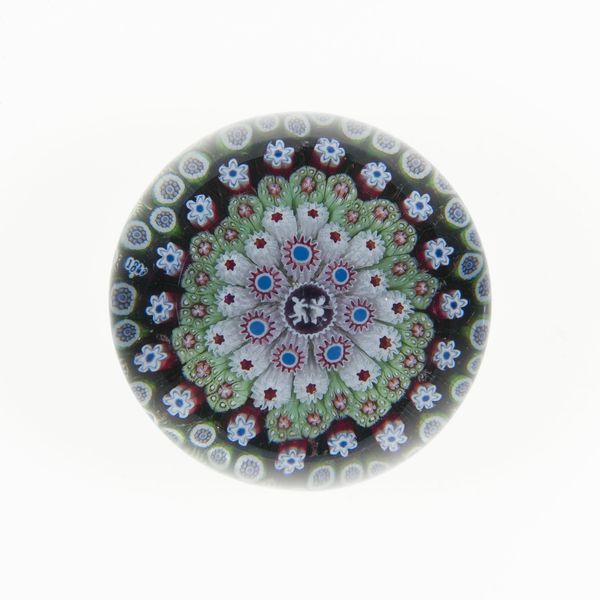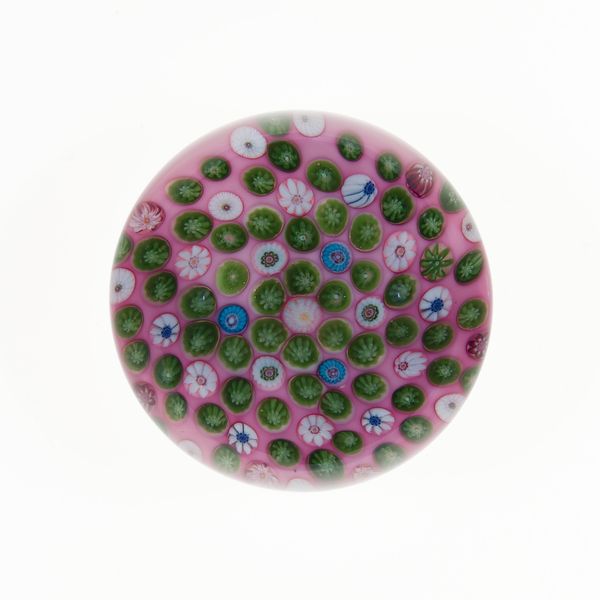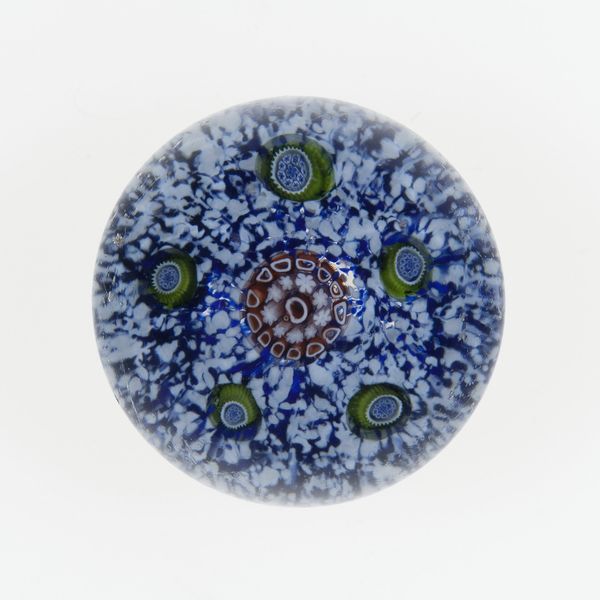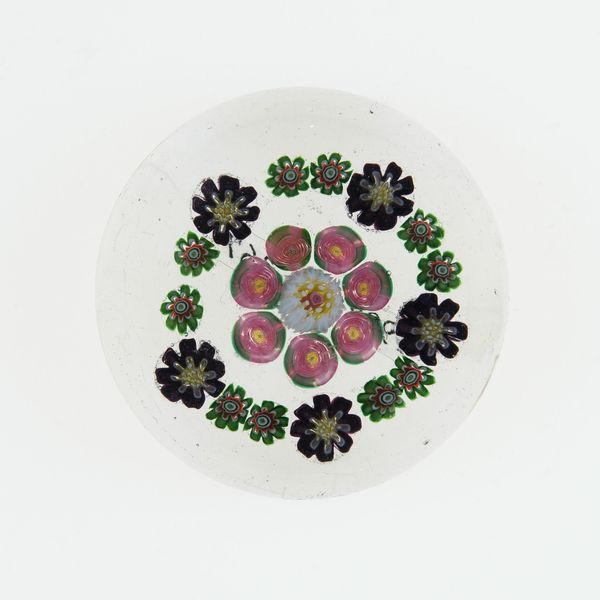
Dimensions: diam. 4.5 cm (1 3/4 in.)
Copyright: Public Domain
This paperweight was made in France by the Clichy Glasshouse between 1837 and 1885, and it is made of glass. Though modest in scale, this object gives us a glimpse into the highly specialized world of glass production in the nineteenth century. Think about the precision needed to create those tiny floral inserts, known as "murrines," and then arrange them perfectly within the clear glass dome. These weren't traditional art materials but came straight from the factory floor, reflecting a culture of industrial innovation and skilled labor. The weight and clarity of the glass, along with the vibrant colors, create a miniature world of beauty. The act of making this paperweight involved teams of artisans working together, each with their own area of expertise. This division of labor, so characteristic of the industrial age, is embedded in the object itself. It represents a significant amount of work, encapsulating broader issues of labor, consumerism, and artistry. By focusing on materials and making, we can appreciate how this seemingly simple paperweight blurs the boundaries between craft, design, and fine art.
Comments
No comments
Be the first to comment and join the conversation on the ultimate creative platform.
